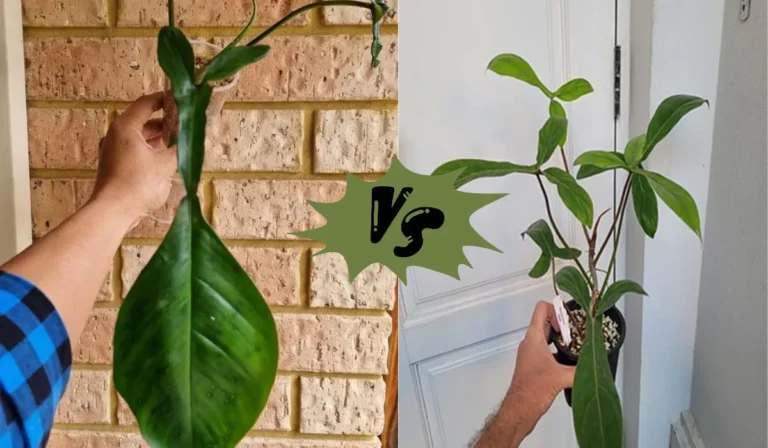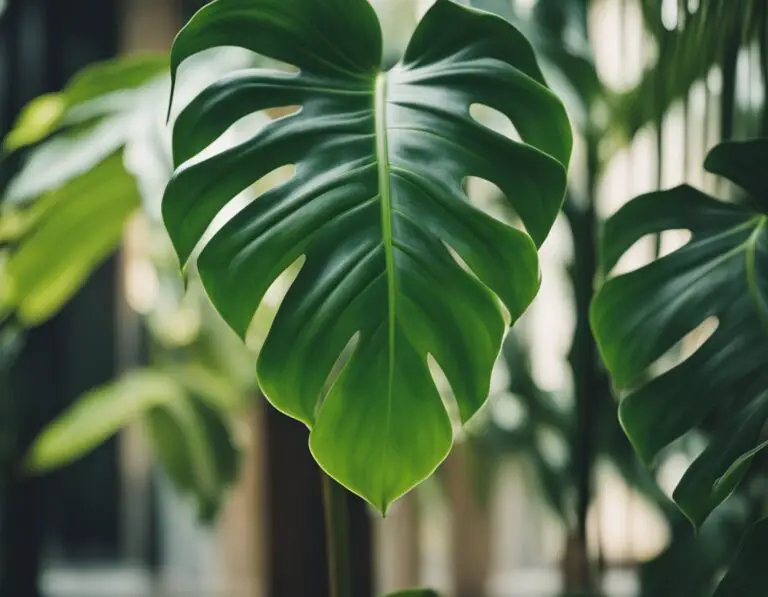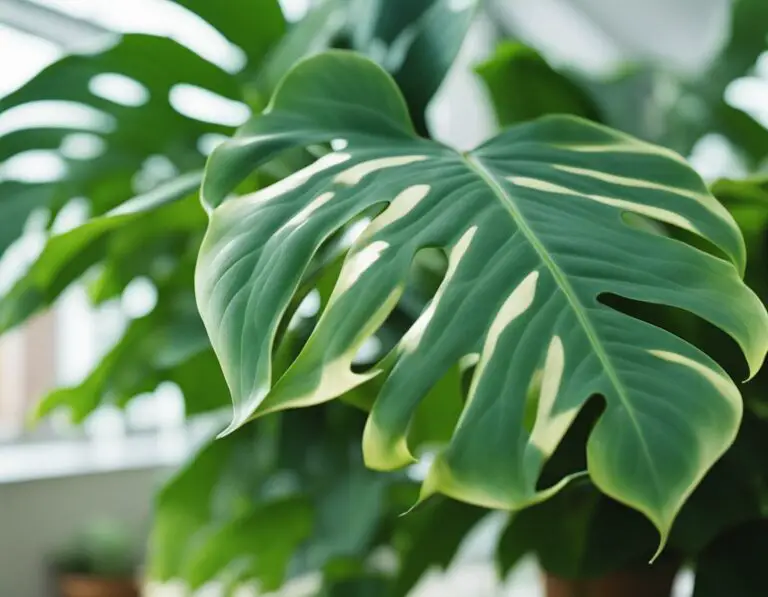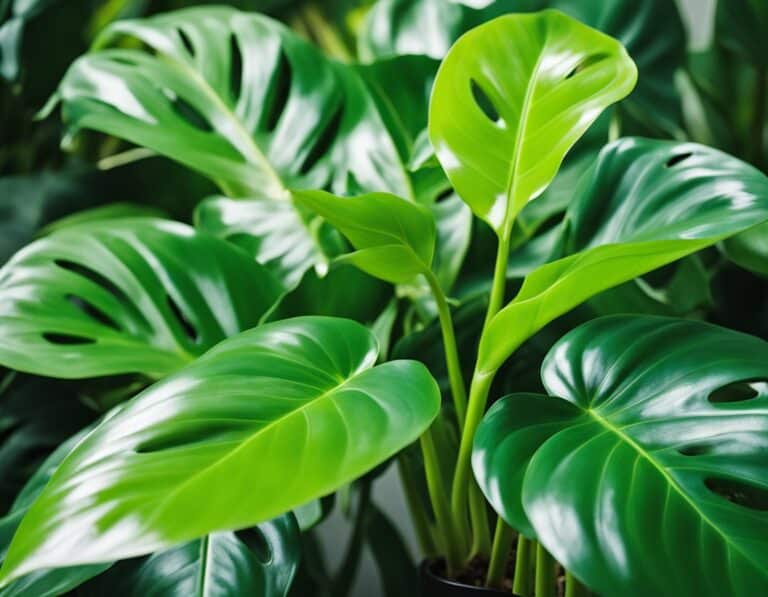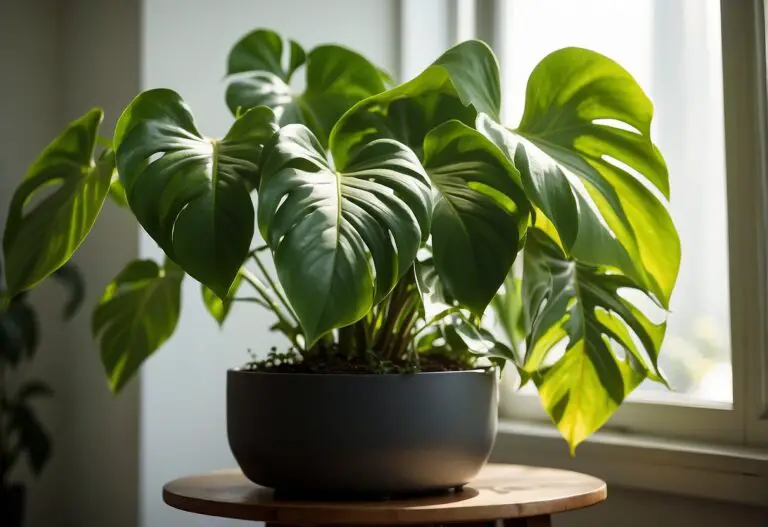Philodendron Recurvifolium: A Beginner’s Guide to Care and Maintenance
From Louise: I’m a gardening enthusiast, specializing in plant care and flower knowledge. I’m here to share my expertise and help with your gardening questions. Feel free to ask about Philodendron Plant care – I’ll respond within 24 hours!
Are you looking to add a touch of exotic beauty to your indoor garden? Look no further than the Philodendron Recurvifolium. This stunning plant is native to southern Brazil and features a unique red edge around its lush green leaves.
With moderate growth and easy care requirements, the Philodendron Recurvifolium is an excellent choice for both novice and experienced plant enthusiasts.

One of the most striking features of the Philodendron Recurvifolium is its snake-like appearance as it climbs. This effect is created by the elongated internodes between growth points, which stretch out and forward before curving back.
While it appreciates moderate to high humidity, this plant does well in indirect light and appreciates airflow. With proper care, the Philodendron Recurvifolium can grow to be a stunning centerpiece in any indoor garden.
Whether you’re a seasoned plant enthusiast or just starting out, the Philodendron Recurvifolium is an excellent choice for adding a touch of exotic beauty to your indoor garden.
With its unique appearance and easy care requirements, this plant is sure to impress. So why not give it a try and see for yourself the stunning beauty that the Philodendron Recurvifolium can bring to your home?
Philodendron Recurvifolium

If you’re looking for a beautiful and easy-to-care-for plant, then the Philodendron Recurvifolium is an excellent choice.
This plant is native to southern Brazil and features deep green leaves with a stunning red edge. Here’s everything you need to know about this plant.
Origin
The Philodendron Recurvifolium is native to southern Brazil, where it grows in the understory of rainforests. This plant is a member of the Araceae family and is closely related to other popular houseplants like the Monstera and the Pothos.
Growth
The Philodendron Recurvifolium is a moderately fast-growing plant that can reach up to 3-4 feet in height. This plant does well in moderate, indirect light and moderate to high humidity. It appreciates airflow, so be sure to place it in a well-ventilated area.
Here are some additional tips to help your Philodendron Recurvifolium thrive:
- Water your plant when the top two inches of soil are dry. This plant prefers to dry out slightly between waterings.
- Use a well-draining potting mix to prevent water from sitting in the soil.
- Fertilize your plant once a month during the growing season (spring and summer).
- Prune your plant regularly to encourage bushier growth and remove any dead or damaged leaves.
Overall, the Philodendron Recurvifolium is a beautiful and easy-to-care-for plant that is perfect for both beginners and experienced plant parents. With the right care, your plant will thrive and bring a touch of tropical beauty to your home.
Care Instructions

Philodendron recurvifolium is a beautiful plant that can be a great addition to your home or office.
Here are some care instructions to help you keep your Philodendron recurvifolium healthy and thriving:
Light
Philodendron recurvifolium prefers bright, indirect light. Direct sunlight can damage the leaves, so it’s best to keep your plant away from windows that receive direct sunlight.
If your plant is not getting enough light, the leaves may become smaller and the stems may become longer as the plant tries to reach for more light.
Water
When it comes to watering your Philodendron recurvifolium, it’s important to strike a balance between keeping the soil moist and avoiding overwatering. Water your plant when the top inch of soil feels dry to the touch.
Make sure to water thoroughly, allowing the water to drain out of the bottom of the pot. Do not let your plant sit in standing water, as this can cause root rot.
Humidity
Philodendron recurvifolium prefers high humidity, so it’s a good idea to mist your plant regularly with a spray bottle.
You can also place a tray of water near your plant to help increase the humidity around it.
Soil
Philodendron recurvifolium prefers well-draining soil that is rich in organic matter. You can use a potting mix that is specifically formulated for houseplants or create your own mix using peat moss, perlite, and vermiculite.
Fertilizer
You can fertilize your Philodendron recurvifolium once a month during the growing season (spring and summer) using a balanced fertilizer. Follow the instructions on the fertilizer package for the correct dosage.
Propagation
Philodendron recurvifolium can be propagated through stem cuttings. Cut a stem that is at least 6 inches long and has a few leaves attached. Remove the lower leaves and place the stem in water or soil.
Keep the soil moist and place the cutting in a bright, indirect light. Roots should start to form in a few weeks.
By following these care instructions, you can help your Philodendron recurvifolium thrive and add beauty to your home or office.
Propagation Methods

If you want to grow more Philodendron recurvifolium, there are several propagation methods to choose from. Here are three common ways to propagate this plant:
- Stem Cuttings: This is the most popular method and involves taking a stem cutting from the mother plant and rooting it in water or soil. To do this, find a healthy stem with at least one leaf node and cut it with a clean, sharp knife or pair of scissors. Make sure the cutting is at least 4-6 inches long and has a few leaves attached. Place the cutting in a jar of water or potting mix and keep it in a warm, bright spot. Change the water every few days to prevent bacteria growth. Once the roots have formed, you can transplant the cutting to a larger pot.
- Air Layering: This method involves creating a new plant by encouraging roots to grow on a stem while it is still attached to the parent plant. To do this, choose a healthy stem and make a small cut in the bark about 6-8 inches from the tip. Wrap the cut with sphagnum moss and secure it with plastic wrap. Keep the moss moist and within a few weeks, roots should start to grow. Once the roots are at least an inch long, cut the stem below the moss and plant the new plant in its own pot.
- Division: This method involves separating the plant into smaller sections and replanting them. This is best done when the plant is already large and has several stems. Carefully remove the plant from its pot and gently separate the stems, making sure each section has its own roots. Replant each section in its own pot with fresh potting mix.
No matter which method you choose, make sure to keep the soil moist and provide plenty of bright, indirect light. With a little patience and care, you can easily propagate Philodendron recurvifolium and enjoy more of this beautiful plant in your home.
Common Issues
Philodendron recurvifolium is a relatively easy plant to care for, but like all plants, it can experience issues. Here are some common issues you may encounter when growing Philodendron recurvifolium:
- Yellowing leaves: If the leaves of your Philodendron recurvifolium start to turn yellow, it could be a sign of overwatering or underwatering. Check the soil moisture level and adjust your watering schedule accordingly. Make sure the pot has proper drainage to prevent water from sitting in the soil.
- Brown spots: Brown spots on the leaves of your Philodendron recurvifolium could be a sign of a fungal or bacterial disease. Remove any affected leaves and treat the plant with a fungicide or bactericide. Make sure to follow the instructions on the product label.
- Pest infestation: Philodendron recurvifolium can be susceptible to pests like spider mites, mealybugs, and aphids. Check the leaves and stems of your plant regularly for any signs of infestation. If you notice pests, treat the plant with an insecticide. You can also try using a homemade solution of water and dish soap to remove the pests.
- Slow growth: If your Philodendron recurvifolium is not growing as quickly as you would like, it could be due to a lack of nutrients. Make sure to fertilize your plant regularly with a balanced fertilizer. You can also try adding compost or worm castings to the soil to provide additional nutrients.
- Wilting leaves: Wilting leaves on your Philodendron recurvifolium could be a sign of underwatering or overwatering. Check the soil moisture level and adjust your watering schedule accordingly. If the soil is too dry, water the plant thoroughly and make sure the pot has proper drainage. If the soil is too wet, allow it to dry out before watering again.
By keeping an eye out for these common issues and taking prompt action when necessary, you can keep your Philodendron recurvifolium healthy and thriving.
Varieties
Philodendron recurvifolium is a unique and beautiful species of Philodendron. While it is a relatively uncommon plant, there are a few different varieties that are worth exploring if you are a fan of this species.
One popular variety of Philodendron recurvifolium is the “Red Edge” variety, which features a stunning red edge around each leaf. This variety is particularly striking and is sure to catch the eye of anyone who sees it.
Another variety of Philodendron recurvifolium is the “Green” variety, which is the most common and widely available form of this plant. While it may not have the same striking visual appeal as the Red Edge variety, it is still a beautiful plant that is well worth growing.
If you are looking for something a bit more unique, you may want to consider the “Variegated” variety of Philodendron recurvifolium. This variety features leaves with a beautiful variegated pattern of green and white, making it a real standout in any collection.
No matter which variety of Philodendron recurvifolium you choose, you are sure to be impressed by this stunning plant. With its unique appearance and relatively easy care requirements, it is a great choice for any indoor plant lover.
Frequently Asked Questions
What are some other Philodendron species?
Philodendron is a large genus of flowering plants in the Araceae family. Some other popular Philodendron species include Philodendron Birkin, Philodendron Brasil, Philodendron Gloriosum, Philodendron Micans, and Philodendron Xanadu. Each species has its own unique characteristics and care requirements.
What is Philodendron werneri mini?
Philodendron werneri mini is a small, compact Philodendron species that is native to Brazil. It has heart-shaped leaves that are green and glossy. This plant is a great choice for small spaces or as a desk plant. It prefers bright, indirect light and well-draining soil.
What is Philodendron genevievianum?
Philodendron genevievianum is a rare Philodendron species that is native to Colombia. It has large, dark green leaves with a velvety texture. This plant prefers bright, indirect light and well-draining soil. It is a slow-growing plant that requires patience and care.
What is Philodendron Pink Princess?
Philodendron Pink Princess is a stunning Philodendron hybrid that has pink variegation on its leaves. It is a slow-growing plant that requires bright, indirect light and well-draining soil. This plant is highly sought after by collectors due to its unique coloration.
What is Philodendron Red Emerald?
Philodendron Red Emerald is a hybrid Philodendron that has large, dark green leaves with red undersides. It prefers bright, indirect light and well-draining soil. This plant is a great choice for adding a pop of color to any space.
What is Thaumatophyllum stenolobum?
Thaumatophyllum stenolobum is a Philodendron species that was previously known as Philodendron hastatum. It has large, silver-green leaves that are shaped like an arrowhead. This plant prefers bright, indirect light and well-draining soil. It is a great choice for adding a tropical feel to any space.
Overall, Philodendron recurvifolium is a great plant for beginners and experienced plant parents alike. With proper care, it can thrive in a variety of environments and add a touch of green to any space.

